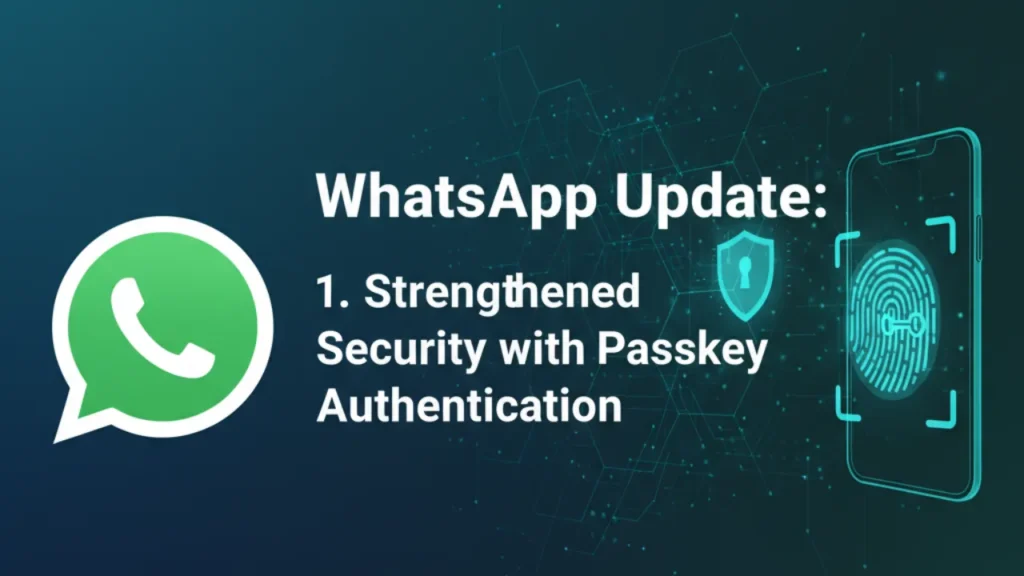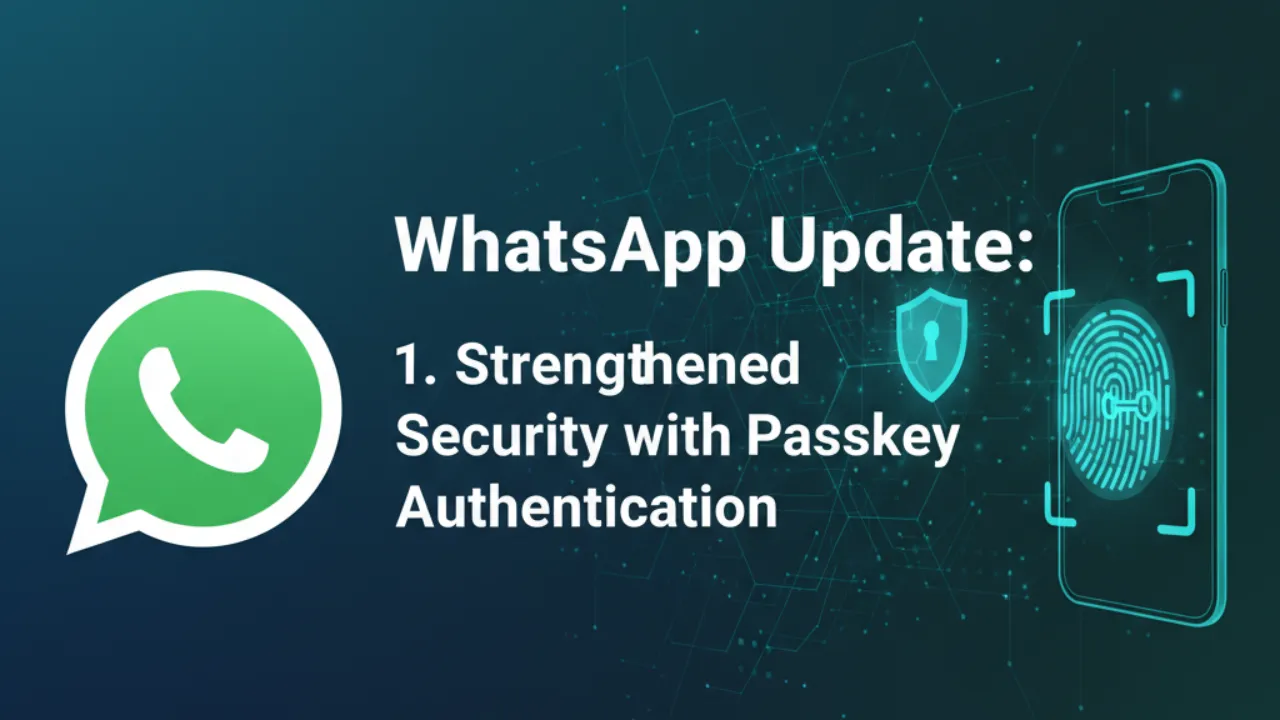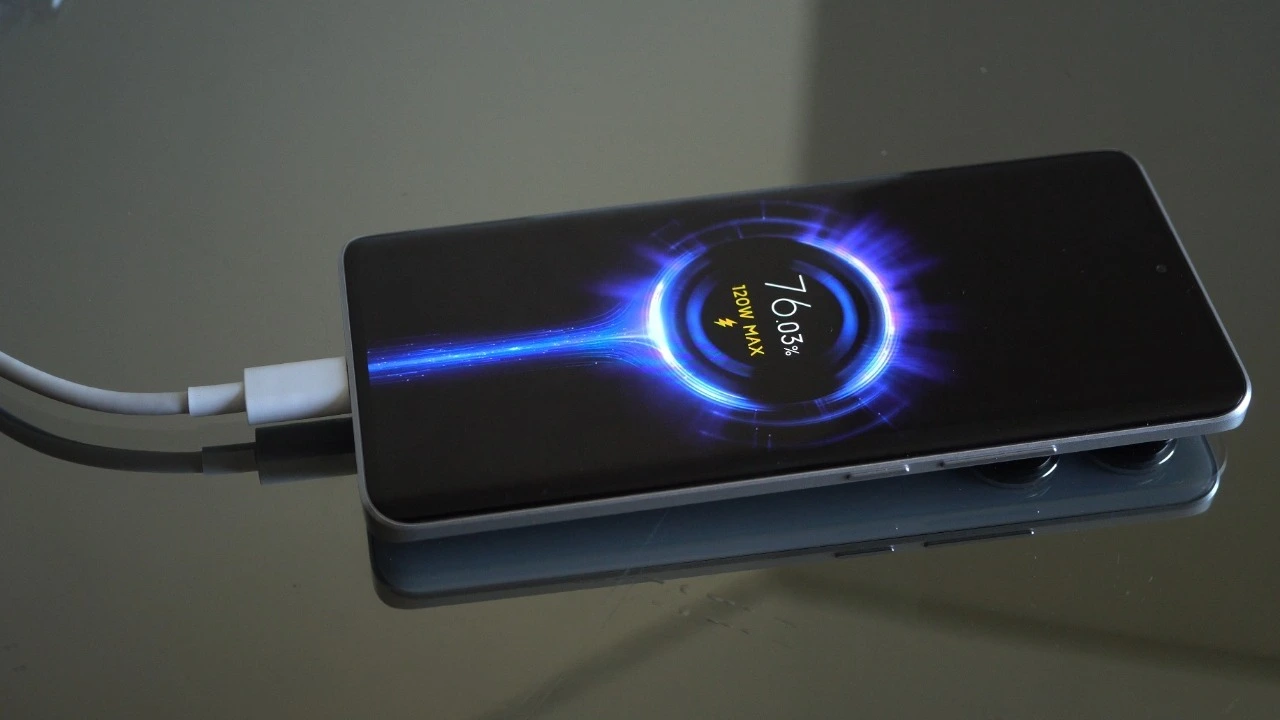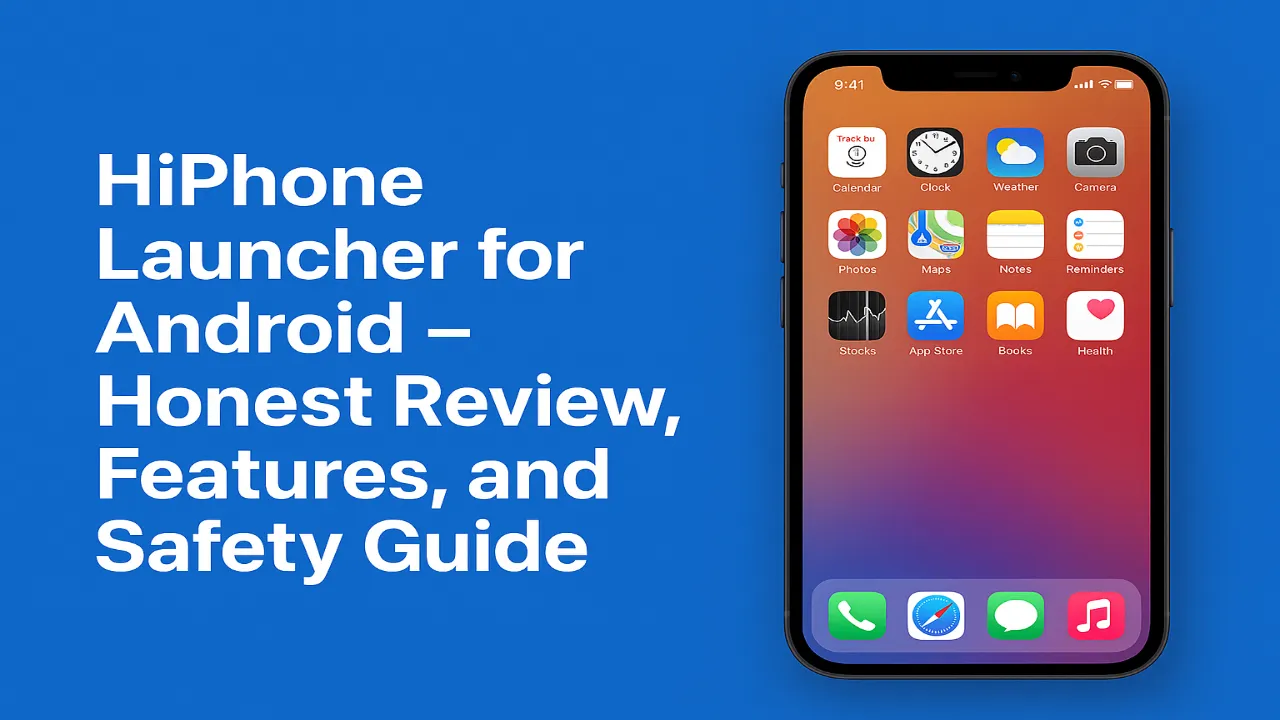WhatsApp has rolled out an important security-focused update titled “New WhatsApp Update: 1. Strengthened Security with Passkey Authentication.” As cyber threats evolve and users demand simpler, safer login experiences, passkeys are emerging as the next step beyond traditional passwords. This update brings modern, phishing-resistant authentication to WhatsApp accounts, helping secure messages, backups, and linked devices. In this article we explain what passkey authentication is, why it matters, the benefits for everyday users, and step-by-step guidance to enable the feature — all while keeping SEO best practices in mind.

What is Passkey Authentication?
Passkey authentication is a passwordless sign-in method that uses cryptographic key pairs stored securely on your device. Instead of entering a password, the user verifies their identity using a device-bound credential — typically biometrics (fingerprint, face) or a device PIN. The public key is stored by the service (WhatsApp), while the private key never leaves your device. This design makes passkeys resistant to common attacks like credential stuffing, phishing, and server-side password leaks.
Why WhatsApp adopted passkeys
WhatsApp is used for millions of private and business conversations worldwide. Traditional passwords and SMS-based verifications have known weaknesses: passwords can be reused or phished, and SMS codes can be intercepted. By introducing passkey authentication in the “New WhatsApp Update: 1. Strengthened Security with Passkey Authentication,” WhatsApp aims to reduce account takeover risks and provide a smoother, quicker login experience for users across devices.
Key benefits of the New WhatsApp Update: Passkey Authentication
Stronger security: Passkeys rely on asymmetric cryptography. Because the private key never leaves your device, attackers can’t steal a password from servers or trick you into entering a code on a fake page.
Phishing resistance: Since authentication requires a device-held key and local biometric or PIN confirmation, passkeys prevent attackers from capturing credentials via phishing websites or malicious apps.
Faster login experience: Passkeys eliminate the need to remember long passwords or copy one-time codes. Authentication becomes a quick biometric tap or device PIN entry.
Multi-device friendliness: With WhatsApp’s multi-device model, passkeys can simplify linking and re-linking devices. Users can approve new device links securely from their primary device using passkey confirmation.
Reduced reliance on SMS: SMS verification is vulnerable and inconvenient. Passkeys offer a reliable alternative that reduces dependency on carrier services.
Privacy and user control: Passkeys are device-specific and under the user’s control. WhatsApp’s implementation is designed to respect user privacy by not storing sensitive biometric data on its servers.
How passkeys work on WhatsApp — a simple walkthrough
- Key generation: When you enable passkeys, your device creates a public/private key pair. The private key is stored in a secure enclave on your device.
- Registration: WhatsApp registers the public key with your account. This ties your account to the device without sharing secrets.
- Authentication: To sign in or link a device, WhatsApp sends a challenge that your device signs with the private key after local verification (biometric/PIN).
- Verification: The signed challenge is checked against the stored public key. If valid, access is granted.
How to enable passkey authentication (general steps)
Note: Exact menu names may vary by platform and version. Always follow on-screen instructions inside WhatsApp.
- Update WhatsApp: Install the latest WhatsApp update from your device’s app store.
- Open Settings > Account > Security (or similar): Look for the “Passkeys” or “Passwordless sign-in” option.
- Register a passkey: Follow prompts to register your device’s passkey, which may require biometric confirmation.
- Confirm backup and recovery options: WhatsApp may recommend enabling secure backups or setting a device recovery method to retain access if you lose a device.
- Test linking a device: Use the Multi-Device feature to link a second device and approve the link via your passkey.
Best practices and tips
Keep devices updated: Ensure your smartphone and any linked devices run the latest OS versions that support secure key storage (e.g., secure enclaves or trusted platform modules).
Enable biometric authentication: Biometrics add convenience and a quick verification step that works well with passkeys.
Set up recovery: Add trusted devices or enable the backup options WhatsApp provides. Losing a device without recovery options can complicate account access.
Use device locks: A passkey is only as safe as the device protecting it. Use a screen lock and enable remote device-wipe features where available.
Beware of scams: Even with passkeys, always be cautious about unsolicited messages asking you to share codes or confirm device links. Never share device-level verification prompts with others.
Implications for businesses and power users
For businesses and power users who rely on WhatsApp for customer communication, passkeys reduce the risk of account compromise that can lead to social engineering attacks. Teams using WhatsApp Business that adopt passkeys will benefit from reduced downtime and stronger access controls. IT teams should incorporate passkey education into security training and adjust account recovery policies accordingly.
SEO pointers: Why this update matters to readers
The phrase “New WhatsApp Update: 1. Strengthened Security with Passkey Authentication” is highly searchable because users want to know how major apps are improving safety. Including the full keyword in the title and opening paragraph — as done here — helps search engines and users immediately identify the article’s relevance. Subheadings, concise meta description, and actionable steps further improve usability and SEO performance.
Conclusion
WhatsApp’s move to strengthen security with passkey authentication is a major step toward safer, more user-friendly account protection. The “New WhatsApp Update: 1. Strengthened Security with Passkey Authentication” promises to reduce phishing and password-related breaches while simplifying sign-ins for millions of users. By enabling passkeys and following best practices, users can enjoy faster, more secure access to their chats without sacrificing privacy. If you haven’t updated WhatsApp yet, consider doing so and explore the passkey option in settings to lock down your account the modern way.
Frequently asked question (FAQ)
Q: Will passkeys replace my current two-step verification?
A: Passkeys are complementary. They can replace password-based sign-ins but WhatsApp may retain optional two-step verification for account recovery.
Q: What happens if I lose my device?
A: Set up recovery options and link multiple trusted devices if possible. Contact WhatsApp support if you lose access and follow their verified recovery flow.
Q: Are passkeys safer than biometrics alone?
A: Passkeys use biometric confirmation locally to unlock the private key — combining hardware security with biometrics provides stronger protection than biometrics or passwords alone.
Q: Can passkeys be used across platforms (iOS, Android, desktop)?
A: Yes, when implemented correctly, passkeys can authenticate users across platforms while keeping private keys on each device.






